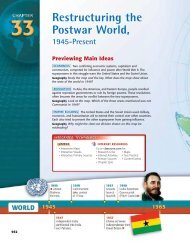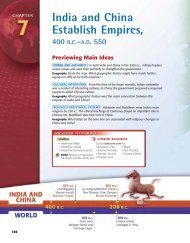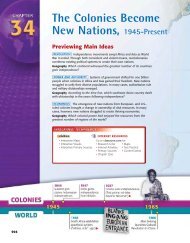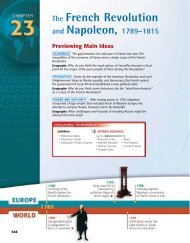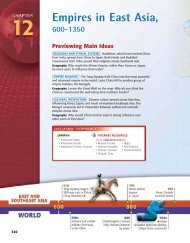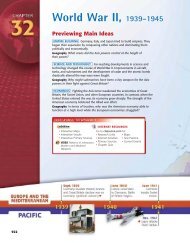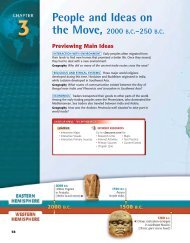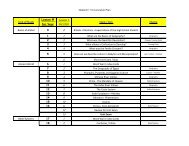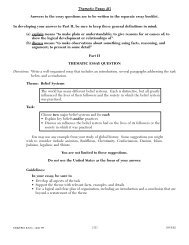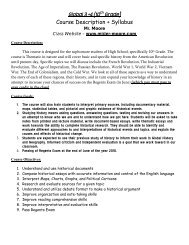The Industrial Revolution, 1700– 1900 Previewing Main Ideas
The Industrial Revolution, 1700– 1900 Previewing Main Ideas
The Industrial Revolution, 1700– 1900 Previewing Main Ideas
Create successful ePaper yourself
Turn your PDF publications into a flip-book with our unique Google optimized e-Paper software.
720 Chapter 25<br />
Inventions in America<br />
In the United States, American inventors worked at making<br />
railroad travel more comfortable, inventing adjustable<br />
upholstered seats. <strong>The</strong>y also revolutionized agriculture, manufacturing,<br />
and communications:<br />
1831 Cyrus McCormick’s reaper boosted American wheat<br />
production.<br />
1837 Samuel F. B. Morse, a New England painter, first sent<br />
electrical signals over a telegraph.<br />
1851 I. M. Singer improved the sewing machine by inventing a<br />
foot treadle (see photograph).<br />
1876 Scottish-born inventor Alexander Graham Bell patented<br />
the telephone.<br />
INTERNET ACTIVITY Create a photo exhibit on<br />
American inventions of the 19th century. Include<br />
the name of the inventor and the date with each<br />
photograph. Go to classzone.com for your research.<br />
of wood to which yarn was attached, doubled the work a weaver could do in a day.<br />
Because spinners could not keep up with these speedy weavers, a cash prize<br />
attracted contestants to produce a better spinning machine. Around 1764, a textile<br />
worker named James Hargreaves invented a spinning wheel he named after his<br />
daughter. His spinning jenny allowed one spinner to work eight threads at a time.<br />
At first, textile workers operated the flying shuttle and the spinning jenny by<br />
hand. <strong>The</strong>n, Richard Arkwright invented the water frame in 1769. This machine<br />
used the waterpower from rapid streams to drive spinning wheels. In 1779, Samuel<br />
Crompton combined features of the spinning jenny and the water frame to produce<br />
the spinning mule. <strong>The</strong> spinning mule made thread that was stronger, finer, and<br />
more consistent than earlier spinning machines. Run by waterpower, Edmund<br />
Cartwright’s power loom sped up weaving after its invention in 1787.<br />
<strong>The</strong> water frame, the spinning mule, and the power loom were bulky and expensive<br />
machines. <strong>The</strong>y took the work of spinning and weaving out of the house.<br />
Wealthy textile merchants set up the machines in large buildings called factories.<br />
Factories needed waterpower, so the first ones were built near rivers and streams:<br />
PRIMARY SOURCE<br />
A great number of streams . . . furnish water-power adequate to turn many hundred<br />
mills: they afford the element of water, indispensable for scouring, bleaching, printing,<br />
dyeing, and other processes of manufacture: and when collected in their larger<br />
channels, or employed to feed canals, they supply a superior inland navigation, so<br />
important for the transit of raw materials and merchandise.<br />
EDWARD BAINS, <strong>The</strong> History of Cotton Manufacture in Great Britain (1835)<br />
England’s cotton came from plantations in the American South in the 1790s.<br />
Removing seeds from the raw cotton by hand was hard work. In 1793, an American<br />
inventor named Eli Whitney invented a machine to speed the chore. His cotton gin<br />
multiplied the amount of cotton that could be cleaned. American cotton production<br />
skyrocketed from 1.5 million pounds in 1790 to 85 million pounds in 1810.<br />
Summarizing<br />
What inventions<br />
transformed the<br />
textile industry?





